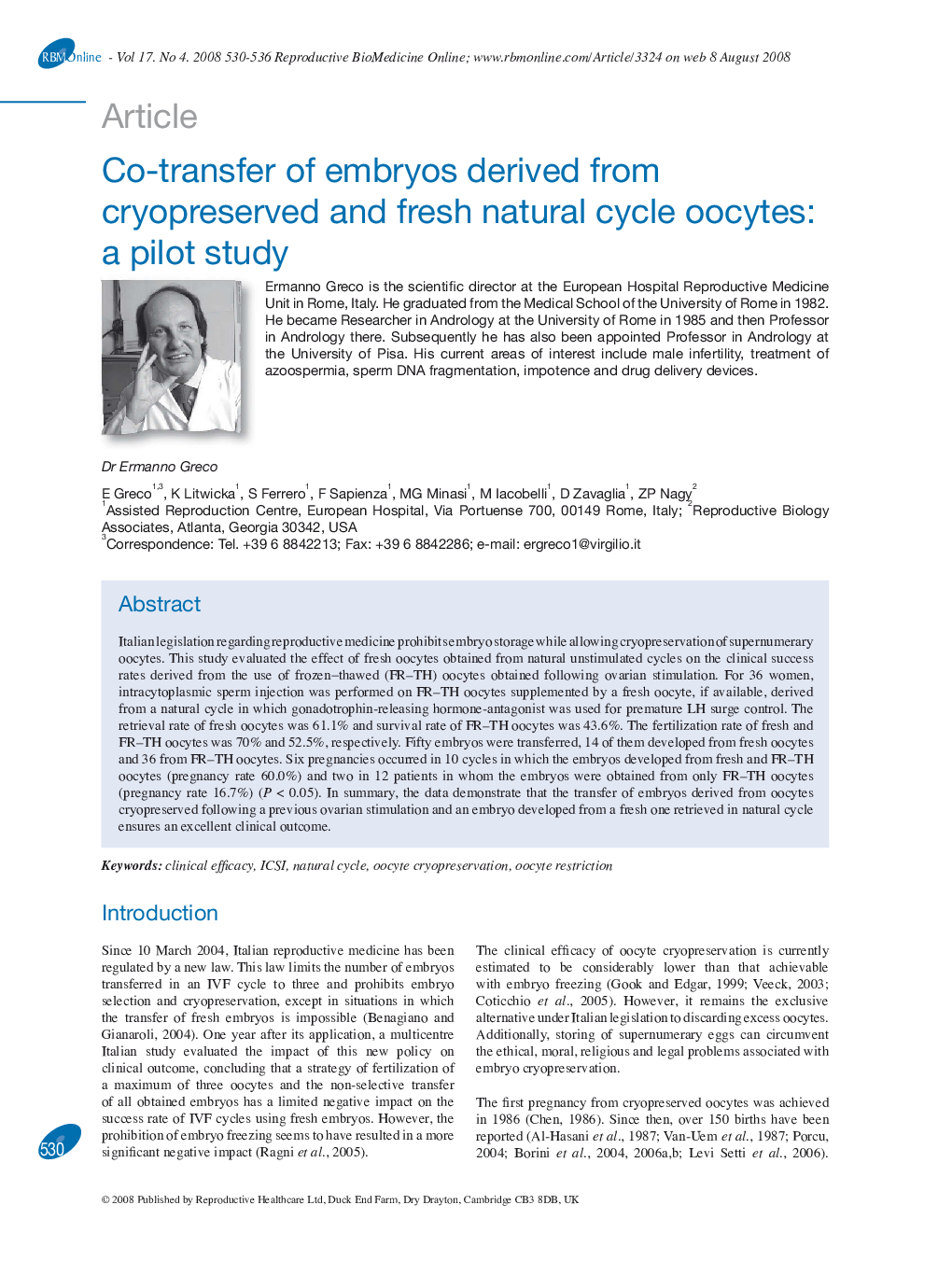| Article ID | Journal | Published Year | Pages | File Type |
|---|---|---|---|---|
| 3972384 | Reproductive BioMedicine Online | 2008 | 7 Pages |
Italian legislation regarding reproductive medicine prohibits embryo storage while allowing cryopreservation of supernumerary oocytes. This study evaluated the effect of fresh oocytes obtained from natural unstimulated cycles on the clinical success rates derived from the use of frozen–thawed (FR–TH) oocytes obtained following ovarian stimulation. For 36 women, intracytoplasmic sperm injection was performed on FR–TH oocytes supplemented by a fresh oocyte, if available, derived from a natural cycle in which gonadotrophin-releasing hormone-antagonist was used for premature LH surge control. The retrieval rate of fresh oocytes was 61.1% and survival rate of FR–TH oocytes was 43.6%. The fertilization rate of fresh and FR–TH oocytes was 70% and 52.5%, respectively. Fifty embryos were transferred, 14 of them developed from fresh oocytes and 36 from FR–TH oocytes. Six pregnancies occurred in 10 cycles in which the embryos developed from fresh and FR–TH oocytes (pregnancy rate 60.0%) and two in 12 patients in whom the embryos were obtained from only FR–TH oocytes (pregnancy rate 16.7%) (P < 0.05). In summary, the data demonstrate that the transfer of embryos derived from oocytes cryopreserved following a previous ovarian stimulation and an embryo developed from a fresh one retrieved in natural cycle ensures an excellent clinical outcome.
